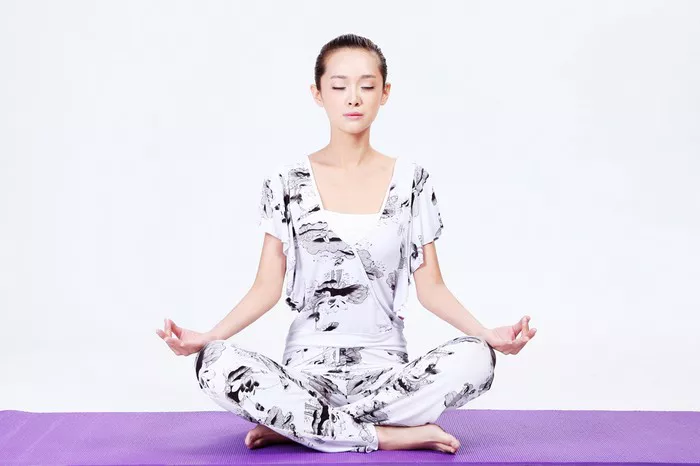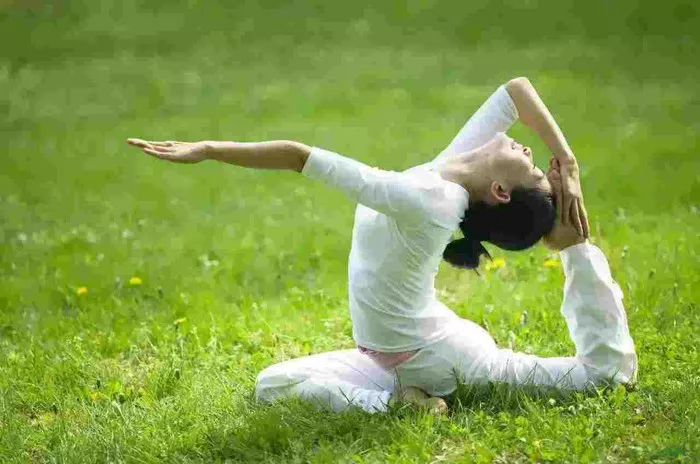In our fast-paced world, finding moments of peace and tranquility can seem like an elusive dream. Yet, amidst the chaos of our daily lives, carving out just 20 minutes for yoga meditation can make a profound difference in our mental, emotional, and physical well-being. In this article, we delve into the transformative power of dedicating a mere fraction of our day to the practice of yoga meditation and explore the benefits it offers at each stage of our journey towards inner peace and self-discovery.
Setting the Stage: Creating Your Sacred Space
Before delving into the practice of yoga meditation, it’s essential to create a conducive environment that supports stillness and introspection. Find a quiet space in your home where you won’t be disturbed, preferably free from distractions such as electronic devices and noise. Consider adorning your space with elements that promote relaxation, such as candles, incense, or soothing music. Creating this sacred space signals to your mind and body that it’s time to unwind and connect with your inner self.
Preparation for Practice: Pranayama and Centering
Begin your 20-minute yoga meditation session by engaging in pranayama, or yogic breathing exercises, to calm the mind and prepare the body for stillness. Sit comfortably on a cushion or yoga mat, with your spine tall and shoulders relaxed. Close your eyes and take a few deep breaths, allowing the breath to flow naturally in and out of your body.
Next, transition into a centering practice to anchor your awareness in the present moment. This can be as simple as silently repeating a calming mantra or focusing on the sensation of your breath moving in and out of your nostrils. Centering allows you to cultivate mindfulness and presence, essential qualities for deepening your meditation practice.
Exploring Asana: Gentle Movement to Open the Body
After centering, incorporate gentle yoga asanas, or postures, to release tension and prepare the body for meditation. Opt for simple poses that focus on stretching and opening areas prone to tightness, such as the hips, shoulders, and spine. Examples include Child’s Pose, Cat-Cow Stretch, and seated Forward Fold.
Move mindfully through each posture, paying attention to sensations in your body and breath. Allow yourself to surrender to the pose, letting go of any tension or resistance. As you move, maintain a sense of ease and softness, honoring your body’s limitations and avoiding strain or discomfort.
Deepening the Practice: Cultivating Awareness Through Meditation
With the body warmed up and the mind centered, transition into the heart of your 20-minute yoga meditation practice: seated meditation. Find a comfortable seated position, either cross-legged on the floor or in a chair with your feet flat on the ground. Close your eyes and bring your attention inward, focusing on the natural rhythm of your breath.
As you settle into meditation, you may choose to anchor your awareness on a specific point of focus, such as your breath, a mantra, or a visual object. Alternatively, you can practice mindfulness meditation, observing sensations, thoughts, and emotions as they arise without judgment or attachment.
Regardless of the technique you choose, the key is to maintain a gentle, non-striving attitude, allowing the present moment to unfold with openness and acceptance. If your mind wanders—which it inevitably will—gently guide your attention back to your chosen point of focus, without harshness or self-criticism.
Navigating Challenges: Embracing Discomfort and Distraction
During your 20-minute yoga meditation practice, you may encounter various challenges that test your commitment and resolve. Physical discomfort, such as stiffness or fatigue, can arise from prolonged sitting, while mental distractions may pull you away from the present moment.
Rather than viewing these challenges as obstacles to overcome, embrace them as opportunities for growth and self-discovery. Notice any resistance or aversion that arises in response to discomfort or distraction, and explore it with curiosity and compassion. By befriending these discomforts rather than resisting them, you can cultivate resilience and deepen your capacity for inner peace.
Closing the Practice: Integration and Gratitude
As your 20-minute yoga meditation practice draws to a close, take a few moments to reflect on the experience and offer gratitude for the opportunity to connect with yourself on a deeper level. Notice any shifts in your mood, energy, or awareness that have occurred as a result of your practice, however subtle they may be.
Consider setting an intention or affirmation for the rest of your day, infusing it with the clarity and centeredness you’ve cultivated during meditation. With a sense of peace and presence, slowly transition back into your daily activities, carrying the benefits of your practice with you as you navigate the world with greater ease and grace.
Conclusion
In our fast-paced world, the idea of dedicating just 20 minutes to yoga meditation may seem insignificant amidst the demands of work, family, and other obligations. However, as we’ve explored in this article, these brief moments of stillness have the power to transform our lives in profound ways, fostering greater clarity, resilience, and well-being.
By creating a sacred space, engaging in preparatory practices, and embracing the challenges that arise, we can harness the full potential of our 20-minute meditation sessions. Through regular practice, we cultivate a deeper connection with ourselves and the world around us, navigating life’s ups and downs with greater ease and grace.
So, the next time you find yourself feeling overwhelmed or stressed, remember that you hold the key to inner peace and tranquility within you. Set aside just 20 minutes, find a quiet space, and embark on the journey of yoga meditation. In doing so, you’ll discover a reservoir of peace and stillness that lies at the very core of your being, waiting to be unlocked and embraced.





















